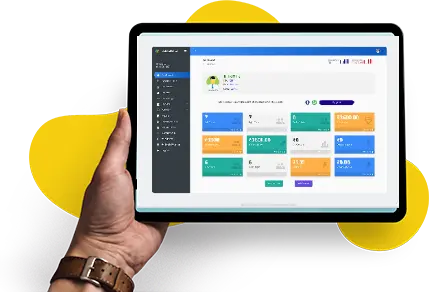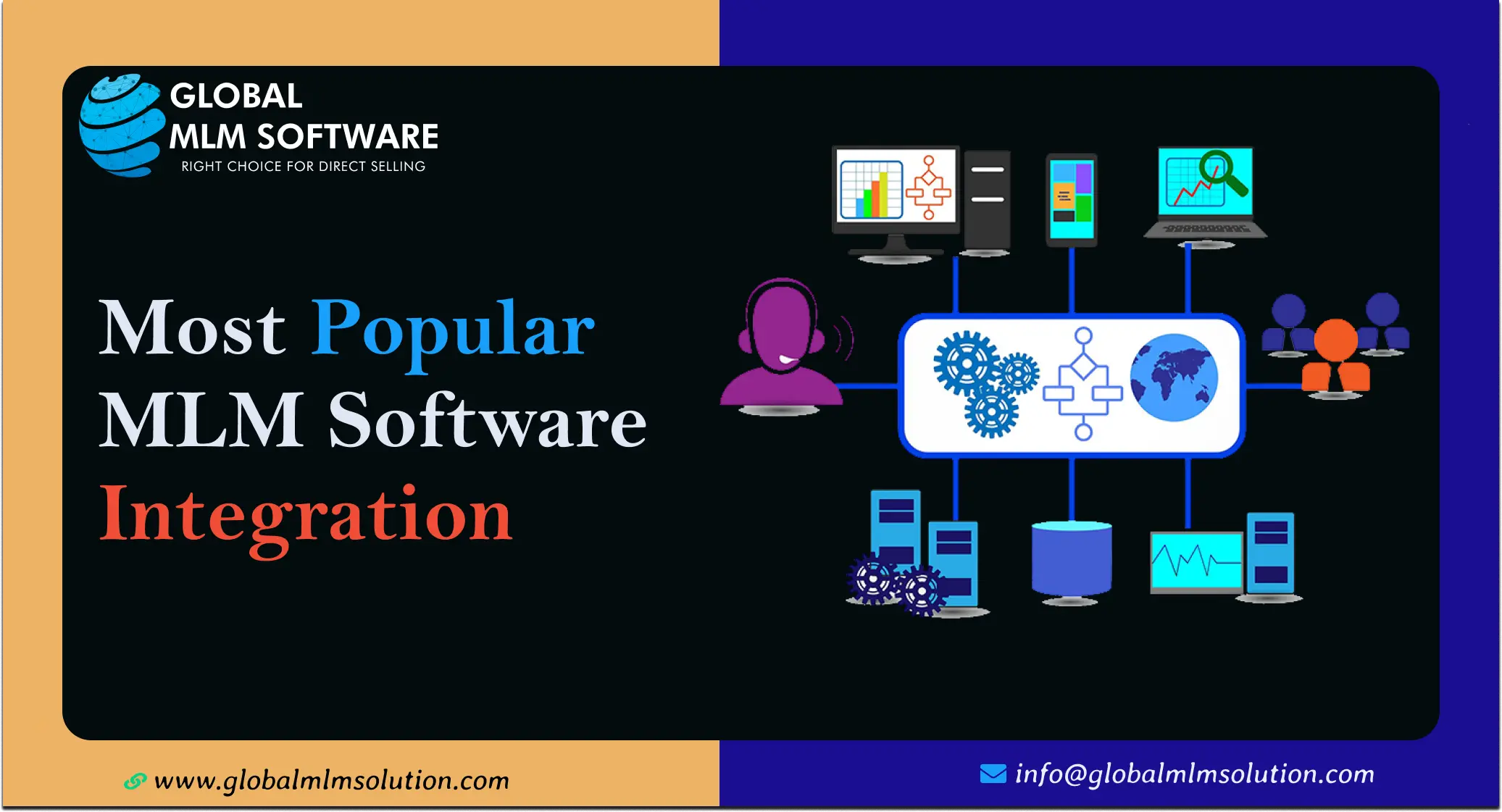Challenges are and will always be a part of your journey while building a successful multi-level marketing (MLM) business. As years pass, markets change, consumer behavior shifts, and distributors' preferences evolve, all of this will keep presenting new MLM enterprise management challenges.
The key to managing or overcoming these challenges is to understand them early, develop the right strategy, and continually work to improve business operations. To support you, we’ve prepared a list of the most common challenges MLM businesses face, along with their solutions.
This list is designed to address the roadblocks you already see and to prepare you for those you might not have considered yet. We aim to help you build a resilient MLM business that’s ready for every future challenge.
This Article Contains:
Solutions for 11 Common MLM Enterprise Management Challenges
We’ve categorized the challenges into three core groups to make it easy for you to align them with your business divisions.
Operational and Financial MLM Enterprise Management Challenges
Many of the multi-level marketing business problems are not different from those of a traditional business. In fact, some of its operational and financial challenges are even complex. But every challenge can be tackled with the right inputs and direction.
Challenge #1: Managing Compensation Plans
Many MLM companies design compensation plans that they expect to remain effective for years. However, it’s necessary to update your compensation plan to ensure that it stays relevant to distributor goals, stands out from the competition, and complies with the evolving regulatory requirements.
Meaning, what worked in 2018 might not be effective in 2030. And yes, knowing what to update is the real challenge, since market dynamics are unpredictable. However, there are solutions for everything, including this one.
Resolution:
You can manage and update your MLM companies’ compensation plan effectively by:
Schedule formal audits of your compensation plan every 18-24 months.
Use live sales and payout data to spot anomalies. For example, when recruitment is rewarded more heavily than product sales, it should be addressed quickly.
Whenever you update the compensation plan, run scenario simulations to forecast how changes to bonuses, ranks, or thresholds will affect profitability and distributor motivation.
Keep a pulse on competitor programs and industry benchmarks so the compensation plan evolves with market expectations.
You can also consider consulting with specialized MLM compensation consultants to identify areas that require a fresh approach.
Challenge #2: Managing Commissions and Bonuses
When commission and bonus processes are handled manually, pressure points show up fast. During busy periods, manual systems get overloaded, leading to unaddressed requests, miscalculations, and delayed payments. If this operational setback continues, it will create a challenge for MLM businesses to build trust among the distributors.
Resolution:
To tackle this challenge, you need innovative solutions, such as:
MLM commission software that is designed to manage and automate the complex commission structures and payout processes.
You need to provide transparent MLM payout dashboards where distributors can track pending and cleared commissions.
Challenge #3: Managing Inventory and Logistics
Multi-level distribution networks have highly unpredictable demand that traditional inventory systems struggle to manage.
Because each distributor orders independently, there is a chance that one distributor orders more than expected while the other doesn’t make the order at all. Besides, if any of the distributors recruit more members than usual, and these recruits are active, you’ll need to keep inventory ready for them. Similarly, there can be several scenarios.
When an MLM business operates in multiple countries, the logistics and management become even more complex, as you need to manage multiple orders across borders or set up inventories in those countries.
Resolution:
The wisest ways to deal with this challenge are:
Use MLM inventory management software that keeps track of stocks and alerts the respective department when a specific product is about to get out of stock.
Connect all the regional and international distribution centers to the MLM inventory management software to enable real-time, centralized product tracking.
Utilize the software to implement AI-driven demand forecasting using regional sales patterns.
For blow-out sales seasons, partner with 3PL (third-party logistics) providers for scalable and flexible delivery solutions that can handle surges during promotions.
Challenge #4: Managing Business Scaling
MLM companies often develop systems that function adequately at smaller scales but fail catastrophically during periods of rapid growth. Legacy infrastructure cannot handle increased transaction volumes, causing system crashes during critical sales events. Database performance degrades as distributor networks expand, leading to slow response times and processing errors. Payment systems become overwhelmed, creating cascading failures in commission calculations and disbursements.
Resolution:
Transition to cloud-based MLM ERP software with auto-scaling capabilities that automatically allocate additional resources during traffic spikes.
Use load balancing to distribute processing across multiple servers.
Design a modular architecture allowing individual components to be upgraded without system-wide shutdowns.
Conduct stress-testing at 5x current capacity levels every quarter to ensure systems can handle projected growth surges.
Regulatory and Reputational Challenges
MLM regulations vary by country and are subject to frequent changes. Therefore, the businesses face various challenges in aligning with dynamic regulations, such as:
Challenge #5: Negative Public Perception
MLM companies face widespread skepticism. It’s because pyramid schemes disguise themselves as network marketing companies and defraud people. It creates a negative perception, as people may associate an MLM company with a pyramid scheme. So, understanding the difference between an MLM and a pyramid scheme becomes challenging for the audience. Thus, it becomes challenging for businesses to present themselves as legitimate MLM companies.
Resolution:
Implement radical transparency by publishing a detailed income disclosure statement showing actual distributor earnings across all levels.
Create third-party verification programs for product claims and business opportunity representations.
Establish consumer advocacy boards with external oversight to review marketing materials and business practices.
Develop comprehensive media relations strategies focusing on legitimate business achievements rather than defensive messaging.
Challenge #6: Continuous Legal Compliance
MLM laws and regulations aren’t the same everywhere, and they don’t stay still for long. Most governments keep updating them to match how the industry is evolving. For companies, the real test is showing that their model is built on actual product sales, not just bringing in new recruits.
That means keeping clear records of what’s being sold, how it’s being sold, and how distributors are really doing business.
Additionally, international expansion multiplies complexity. For instance, countries like Japan and Singapore have different laws and ban certain products from being sold through MLM. Therefore, it poses challenges for you to stay legally compliant while expanding globally.
Resolution:
To tackle this challenge, you can:
Deploy automated compliance monitoring systems that track key metrics like retail sales ratios against product purchases and recruitment patterns in real time.
Establish dedicated legal teams in each major market with local regulatory expertise and government relations capabilities.
Create standardized compliance protocols that exceed the strictest requirements across all operational territories.
Challenge #7: Data Security and Privacy
As the technology progresses and reliance increases, cybercrimes become a major challenge for every MLM company. And as a product/service-offering organization running on a direct sale model, MLM businesses have to collect and store a vast amount of personal as well as financial data.
Distributor databases are a high-value target for cybercriminals seeking identity theft opportunities or competitive intelligence. Plus, the commission processing systems handle sensitive banking information that requires the highest security standards.
International data transfer regulations like GDPR create complex compliance requirements for companies operating across borders. Third-party integrations with payment processors and shipping companies multiply potential vulnerability points.
On top of everything, the cost of cyberattacks in the USA alone is projected to reach $1.82 trillion. Therefore, the challenge to protect data and maintain privacy becomes even more significant as time passes by.
Resolution:
These are some methods to mitigate this challenge:
Start using MLM software that comes with high data security standards.
Mandatory implementation of zero-trust security architecture with multi-factor authentication for all system access.
Deploy end-to-end encryption for all data transmissions and storage, with regular penetration testing by certified security firms.
Establish data minimization policies that collect only essential information and delete unnecessary data according to regional retention requirements.
Create incident response plans with immediate notification protocols for distributors and regulatory authorities in case of security breaches.
Train both distributors and permanent employees regarding cybersecurity best practices.
Distributor and Recruitment MLM Challenges
Distributors are the backbone of an MLM business. Fundamentally, distributors are the primary growth factor, as they are responsible for a large portion of sales. They recruit people under their downlines to generate more sales revenue. But recruiting, managing, and retaining distributors is a challenge in itself, which we will discuss now.
Challenge #8: Recruiting New Members
Recruiting new distributors is always challenging. Even established companies struggle to bring in distributors year after year, and more often than normal, the problem isn’t people, it's the process.
When messaging, positioning, and onboarding aren’t documented into clear SOPs, outreach becomes inconsistent, and potential recruits don’t see a clear path to value or income. The result: curious prospects leave because they don’t understand what they’re signing up for.
From the distributor’s point of view, the challenge is just as pressing. Many struggle to explain the business model, present the products, or highlight the opportunity in a way that resonates. This lack of consistent messaging leads to rejections, low confidence, and eventually high dropout rates.
Resolution:
To overcome this challenge, MLM businesses need to:
Use MLM lead generation tools from the beginning to keep a steady pipeline of distributors.
Create clear and replicable SOPs for presenting the opportunity so distributors have a proven framework to follow.
Provide marketing assets, such as presentations, brochures, marketing material, simplified versions of compensation plans, and digital assets, that ease the distributor’s role.
Deploy MLM recruitment software to automate lead generation, manage follow-ups, and track recruitment funnels with transparency.
Train distributors not just for sales, but for storytelling and brand positioning, so they can attract recruits with confidence.
Challenge #9: High Distributor Attrition Rate
Successful recruitment is just the beginning of the challenges. Once the recruitment is successful, continuous efforts are required to retain distributors.
Many join with high expectations, but when results don’t come quickly, they leave. This constant churn of distributors creates instability, making it difficult for businesses to maintain momentum.
Therefore, attrition rates increase, and companies lose potential leaders as well as the investments made in training and onboarding. For distributors who stay, seeing peers drop out regularly can lower morale and confidence in the company. In the long run, this cycle weakens both trust and retention.
Resolution:
To address this challenge, companies should focus on retention strategies such as:
Providing structured training and mentorship programs that help new distributors start strong.
Offering realistic income projections and setting clear expectations from the beginning.
Recognizing and rewarding small achievements to keep distributors motivated.
Building a supportive community where distributors feel connected and valued, beyond just sales numbers.
Challenge #10: Managing Distributors
As the distributor base grows, businesses often face difficulties in tracking performance, ensuring MLM compliance and regulations, providing timely training, and maintaining consistent communication across different levels.
Additionally, distributors operate as independent contractors but require support at the corporate level. This creates an ambiguous management relationship that traditional business structures cannot address effectively.
Resolution:
To deal with these challenges, you need to:
Deploy comprehensive distributor management platforms.
Implement automated performance monitoring that flags distributors requiring intervention and support.
Create tiered management structures with clear escalation paths, allowing field leaders to handle routine issues while corporate teams focus on strategic challenges.
Establish standardized communication protocols using multi-channel messaging systems to ensure critical updates reach all distributors.
Challenge #11: Leadership and Team Coordination
In a multi-level marketing company, people join from diverse backgrounds and skill sets. Therefore, leadership and team collaboration present both opportunities and challenges.
It’s an opportunity because your company will receive a wide variety of opinions and ideas. At the same time, it’s challenging because aligning these different ideas and energies toward a shared vision is not always simple.
Resolution:
The practical ways to bring cooperation among your company's employees, distributors, and leaders are by:
Organize regular training sessions to educate distributors about your brand, its vision, and its goals.
Starting distributor engagement programs where they get to know each other better and can work together more effectively.
Leaders should host acknowledgement programs for teams, rather than just focusing on individual achievements.
Conclusion
Building a successful MLM enterprise is a continuous journey of overcoming challenges. We’ve discussed the critical hurdles across operations, finances, regulations, reputations, and distributor management.
By proactively identifying and addressing these common pain points, MLM businesses can build resilience, adapt to market shifts, and ensure sustainable growth. Remember, the key lies in strategic planning and implementing the right solutions at the right time.
FAQs
1. What are the biggest challenges faced by MLM enterprises in 2025?
The major challenges include retaining distributors, strict regulations, data security, and maintaining reputation.
2. What operational challenges do MLM enterprises face?
The common operational challenges for MLM include managing commissions, inventory, business growth, and updating compensation plans.
3. What are the financial challenges in MLM enterprises?
The common financial challenges in MLM enterprises are maintaining consistent revenue and managing operational costs.
4. What are the common recruitment challenges in MLM enterprises?
Attracting quality candidates and managing and retaining distributors are some common recruitment challenges in MLM companies.
Disclaimer: Global MLM Software do not endorse any companies or products mentioned in this article. The content is derived from publicly available resources and does not favor any specific organizations, individuals or products.









